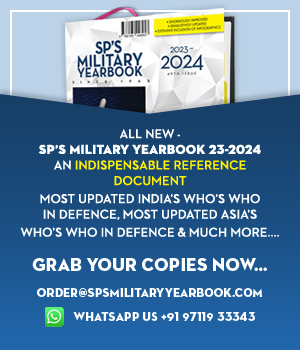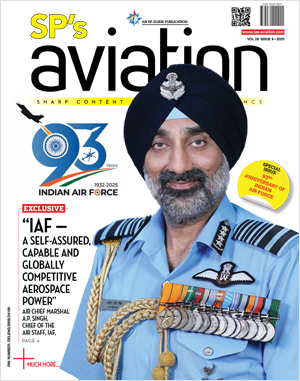INDIAN ARMED FORCES CHIEFS ON OUR RELENTLESS AND FOCUSED PUBLISHING EFFORTS
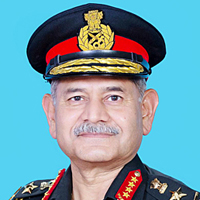
The insightful articles, inspiring narrations and analytical perspectives presented by the Editorial Team, establish an alluring connect with the reader. My compliments and best wishes to SP Guide Publications.
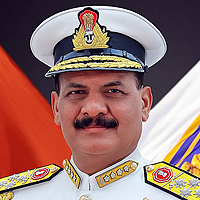
"Over the past 60 years, the growth of SP Guide Publications has mirrored the rising stature of Indian Navy. Its well-researched and informative magazines on Defence and Aerospace sector have served to shape an educated opinion of our military personnel, policy makers and the public alike. I wish SP's Publication team continued success, fair winds and following seas in all future endeavour!"

Since, its inception in 1964, SP Guide Publications has consistently demonstrated commitment to high-quality journalism in the aerospace and defence sectors, earning a well-deserved reputation as Asia's largest media house in this domain. I wish SP Guide Publications continued success in its pursuit of excellence.
- A leap in Indian aviation: Prime Minister Modi inaugurates Safran's Global MRO Hub in Hyderabad, Calls It a Milestone
- All about HAMMER Smart Precision Guided Weapon in India — “BEL-Safran Collaboration”
- India, Germany deepen defence ties as High Defence Committee charts ambitious plan
- True strategic autonomy will come only when our code is as indigenous as our hardware: Rajnath Singh
- EXCLUSIVE: Manish Kumar Jha speaks with Air Marshal Ashutosh Dixit, Chief of Integrated Defence Staff (CISC) at Headquarters, Integrated Defence Staff (IDS)
- Experts Speak: G20 Summit: A Sign of Global Fracture
Chariots of the Battlefield — Combat Helicopters
As warfare enters the era of multi-domain operations, combat helicopters are evolving with artificial intelligence, stealth, and manned-unmanned teaming, ensuring they remain relevant and strategically decisive in the battles of the future
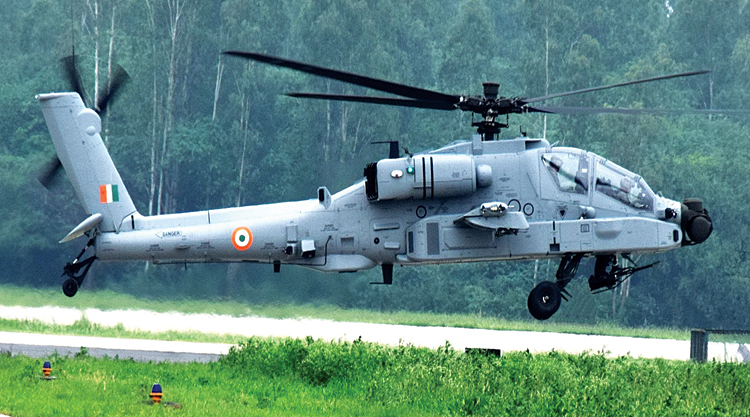
Combat helicopters have become vital assets in modern warfare, revolutionising military operations with their versatility, agility, and firepower. They provide critical capability across a wide range of combat scenarios. Their ability to hover, manoeuvre in complex terrains, and operate at low altitudes allows them to engage targets with unmatched precision, often in environments inaccessible to fixed-wing aircraft. Combat helicopters enhance battlefield dominance, while their real-time intelligence-gathering capabilities bolster situational awareness. In asymmetric warfare, they counter insurgent threats by delivering swift, targeted strikes. However, vulnerabilities to advanced anti-aircraft systems pose a challenge. As militaries integrate unmanned systems and network-centric warfare, combat helicopters continue to evolve, incorporating cutting-edge technologies to maintain their strategic relevance. Their adaptability and lethality ensure they remain a cornerstone of modern military doctrine, shaping the dynamics of contemporary battlefields.
MAIN ROLES OF COMBAT HELICOPTERS
Helicopters have revolutionised modern warfare, offering unparalleled mobility, versatility, and firepower. Their adaptability allows them to serve in various roles, ensuring operational success in dynamic combat environments. In combat, attack helicopters have redefined battlefield tactics. Their agility and firepower make them indispensable for suppressing threats. Modern technological advancements have further enhanced the capabilities of combat helicopters. Night vision systems, stealth features, and advanced avionics allow them to operate effectively in diverse conditions, from deserts to dense urban landscapes. Their roles include:
- Armed Reconnaissance: Scouting enemy positions with advanced optics, providing targeting data.
- Suppression/Destruction of Enemy Air Defences (SEAD/DEAD): Neutralising enemy radar and surface-to-air missile sites with precision weapons to create safe corridors.
- Air Interdiction: Disrupting enemy logistics, troop movements, and supply lines by striking behind enemy lines.
- Escort Operations: Shielding utility helicopters during assault or insertion missions, suppressing enemy air defences and ground fire.
- Counter-Insurgency & Counter-Terrorism: Executing precision strikes in mountainous and jungle terrains, supporting rapid insertion/extraction and surgical attacks against insurgents or terrorists.
- Battlefield Air Support (CAS): Delivering direct firepower (rockets, cannons, guided missiles) to support ground troops in battle, targeting enemy infantry, bunkers, armoured vehicles, and fortifications.
- Anti-Tank/Anti-Armour Operations: Attack helicopters equipped with anti-tank guided missiles (ATGMs) are crucial for countering enemy armour in high-intensity conflicts.
- Combat Search and Rescue (CSAR): Extracting downed aircrew or trapped soldiers from hostile zones under fire, often providing covering fire with advanced sensor support.
- High-Altitude Operations: Operate in low-oxygen environments at high altitudes,ensuring mobility and firepower in the toughest terrains.
- Urban Warfare Support: Offering precision and agility for fire support, hard-target destruction, and support to fastmoving urban operations in close quarters.
DIFFERENCE BETWEEN ATTACK AND ARMED HELICOPTERS
These two terms are often used interchangeably, but they refer to distinct categories based on design, purpose, and combat capabilities. Attack helicopters are specialised platforms built for offensive combat, whereas armed helicopters are modified utility helicopters equipped with weapons for secondary combat roles. Understanding their differences is key to appreciating their roles.
Attack Helicopters. These aircraft are purpose-built for combat, designed to engage targets on the ground and in the air. These helicopters are equipped with heavy armaments, including the 30mm/20mm guns, rockets and (Hellfire/Helina) missiles. Equipped with advanced avionics, including radar, FLIR, and night-vision systems, they excel in high-threat environments. Attack helicopters prioritise firepower and armour over utility, typically featuring a two-crew configuration (pilot and gunner) and lacking troop-carrying capacity, making them expensive and maintenance-intensive yet highly effective incombat roles.
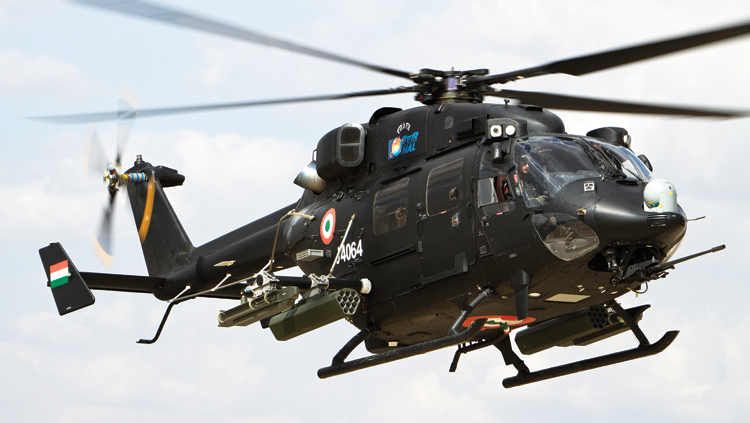
Armed Helicopters. These are modified utility helicopters adapted for combat while retaining multi-role capabilities. Unlike attack helicopters, armed helicopters have lighter armour and simpler avionics, relying on agility rather than heavy countermeasures. Their cost-effectiveness and flexibility enable the air forces to deploy them in diverse roles; however, they are less suited for high-intensity combat compared to dedicated attack platforms.
The Indian Air Force (IAF) employs both attack and armed helicopters to fulfil diverse operational needs, from precision strikes to multi-role support.
URVIVABILITY AND VIABILITY OF COMBAT HELICOPTERS IN CONTESTED AIRSPACE
Combat helicopters remain essential in modern warfare; however, their survivability and viability in contested airspace are getting increasingly challenged due to the proliferation of advanced air defences (MANPADS and SAMs). The Russia-Ukraine War highlights these vulnerabilities. Their vulnerability lies in operations at low altitudes and speeds. MANPADS account for significant losses, which are compounded by GPS jamming and small arms fire in urban or mountainous terrain.
Countermeasures to enhance survivability include infrared suppressors, laser-based systems such as Northrop Grumman’s CIRCM, and armoured fuselages. Stealth features, such as radar-absorbent materials, enhance evasion but add weight and complexity to the design. Manned-Unmanned Teaming (MUM-T) with drones for reconnaissance and strikes reduces exposure, while AI-driven sensor fusion improves threat detection.
Tactically, helicopters require a favourable environment with Suppression of enemy air defence systems. Additionally, robust protection and air cover are necessary. Short-duration sorties, night operations, terrain masking and nape of the earth flying profile further mitigate risks; however, poor tactical discipline can prove fatal.
Ultimately, helicopters remain indispensable for specific missions but demand thorough planning, multi-layered defences, and joint force integration. Without radical innovation, their role might evolve from being the primary attackers to supporting roles in multi-domain operations. This change necessitates balancing their unique capabilities with the challenging and often dangerous realities of contested airspace.
COMBAT HELICOPTER IN THE IAF
India’s fleet has evolved from legacy Soviet Mi-24/35 Hind helicopters to modern systems, including the Boeing AH-64E Apache and indigenous helicopters such asthe HAL Light Combat Helicopter (LCH) Prachand and Rudra. While Apache, Prachand, and Hind fall into the attack helicopter category, Rudra and Mi-17 are armed helicopters.
AH-64E Apache. Cutting-edge imported attack helicopters, with advanced sensors, Hellfire missiles, Stinger AAM, and 360° radar, used in offensive strike, BAS, anti-armour, escort, and SEAD roles.
HAL LCH (Prachand). Indigenous aircraft with stealth features, good high-altitude performance, networked avionics, and advanced survivability. Used in Anti-armour, SEAD, CSAR, and SHBO escort roles.
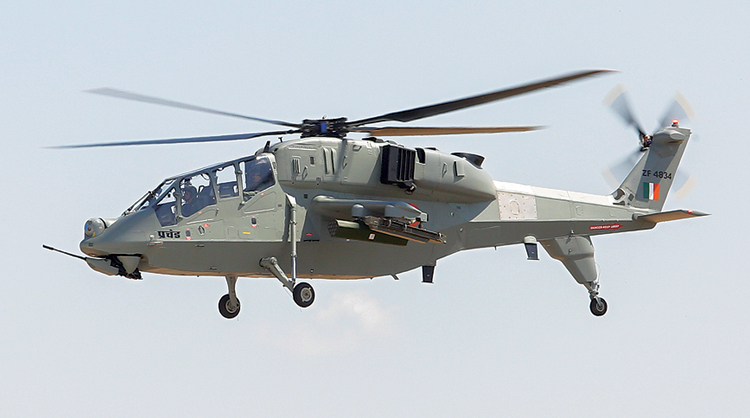
Mi-24/Mi-35. Russian heavily armoured gunship, a legacy system with diminishing use and soon to be phased out, used for troop lift, heavy attack, BAS, and COIN.
HAL Rudra. Weaponised ALH Dhruvs with Integrated EW, EO sensors, Mistral AAM, Helina ATGM, used for multirole missions like recce, troop transport, anti-tank, BAS, COIN, and escort
Mi-17. A versatile Russian-origin helicopter, primarily for transport but occasionally armed for combat roles. The Mi-17V-5 variant can be equipped with rocket pods, machine guns, and anti-tank missiles for light attack missions. Used in counter insurgency operations and disaster relief, these helicopters support troop transport and casualty evacuation, while also providing fire support.
FORCE STRUCTURING AND CAPABILITY ENHANCEMENT
Combat helicopters are pivotal to flexible air combat across diverse terrains, from deserts to the mountains. The Indian Air Force inducted 22 Boeing AH-64E Apache attack helicopters in 2019 to replace its ageing fleet of 15 Mi-24/Mi-35 gunships, acquired from Russia in the 1980s and 1990s. The Apache’s induction enhanced precision strikes and night-fighting capabilities, modernising India’s aerial combat effectiveness.
In the Indian context, combat helicopters play a critical role in highaltitude operations, particularly in the Himalayan regions along the borders with China and Pakistan. Operating at altitudes above 15,000 feet, such as in Ladakh or Arunachal Pradesh, presents unique challenges due to the thin air, extreme weather conditions, and rugged terrain. The Light Combat Helicopter (LCH) Prachand was developed in response to lessons learnt from the 1999 Kargil War. It is uniquely capable of operating at 20,000 feet with a full weapon load, making it critical for high-altitude warfare in regions such asSiachen and Ladakh. These helicopters remain vital for deterrence, rapid response, and maintaining operational superiority in India’s high-altitude battlefields. They are being inducted by both the Indian Air Force and the Indian Army.
The Indian Multi-Role Helicopter (IMRH), a 12.5-tonne twin-engine platform being developed by Hindustan Aeronautics Limited (HAL), is conceived as a versatile replacement for the ageing Mi-17 fleet. The IMRH reportedly would excel in highaltitude operations, troop transport for up to 24 personnel, combat search and rescue, evacuation, and under-slung cargo carriage of 5 tonnes. Its advanced avionics, automatic flight controls, and modular mission systems would enable seamless adaptation to utility, armed, and Special Forces roles, enhancing the IAF’s tactical battlefield operational capability.
The development and induction of ALH Rudra, LCH Prachand, and IMRH in the future indicates a push towards indigenisation, aiming for self-reliance, addressing challenges in scaling production, and reducing import dependency. All these platforms also enhance the high-altitude operation capability.
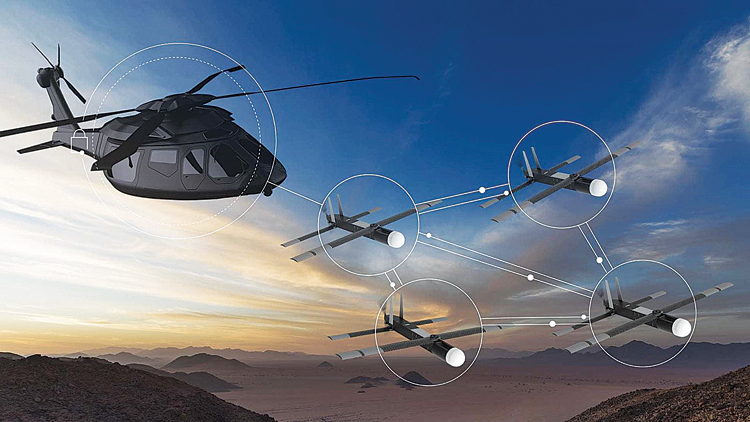
FUTURE TRAJECTORY OF COMBAT HELICOPTERS
The future of combat helicopters in fast-evolving aerial warfare hinges on their ability to adapt to rapidly advancing technologies, shifting battlefield dynamics, and emerging threats. As militaries worldwide integrate artificial intelligence (AI), unmanned systems, and network-centric warfare, combat helicopters and future platforms must evolve to remain relevant. Their traditional strengths, versatility, precision, and manoeuvrability in complex terrains will be augmented by cutting-edge innovations to counter increasingly sophisticated adversaries.
Combat helicopters remain essential in modern warfare; however, their survivability and viability in contested airspace are getting increasingly challenged due to the proliferation of advanced air defences
One significant trend is the integration of AI and autonomy. Future combat helicopters may operate in tandem with unmanned aerial vehicles (UAVs) through manned-unmanned teaming (MUM-T). This would allow helicopters to control drones for reconnaissance, targeting, or electronic warfare, reducing risks to human pilots. AIdriven systems will enhance situational awareness by processing vast amounts of sensor data in real-time, enabling faster decision-making in dynamic combat zones. For instance, advanced targeting systems could autonomously identify and prioritise threats, improving response times.
Another critical evolution is in stealth and survivability. Modern air defences, including surface-to-air missiles (SAMs) and directed-energy weapons, pose significant threats. To counter these, next-generation helicopters would have to incorporate low-observable designs, advanced electronic countermeasures, and adaptive camouflage. Upgraded propulsion systems, such as hybrid-electric engines, promise greater speed, range, and fuel efficiency, enabling operations in contested environments. Additionally, modular designs will allow rapid upgrades of avionics, weapons, and sensors, keeping pace with technological advancements without requiring entirely new platforms.
Cyber and communication security will also play a pivotal role. As helicopters become nodes in networked battlefields, protecting their systems from cyber-attacks is paramount. Robust encryption and resilient communication links will ensure operational integrity.
CONCLUSION
Combat helicopters remain crucial in modern warfare, offering exceptional versatility, accuracy, and mobility to control various battle zones. They perform critical functions such as delivering precise strikes, deploying troops quickly, and supporting reconnaissance, air interdiction, and counterinsurgency missions. Although they face threats from advanced air defences, innovations such as AI, stealth, and Manned-Unmanned Teaming (MUMT) enhance their survivability and performance. In India, platforms such as the Apache, ALH Rudra, LCH Prachand, and the emerging IMRH highlight a move toward indigenisation and high-altitude capability. As warfare advances, combat helicopters will incorporate state-of-the-art technologies to maintain their importance in multi-domain operations.




